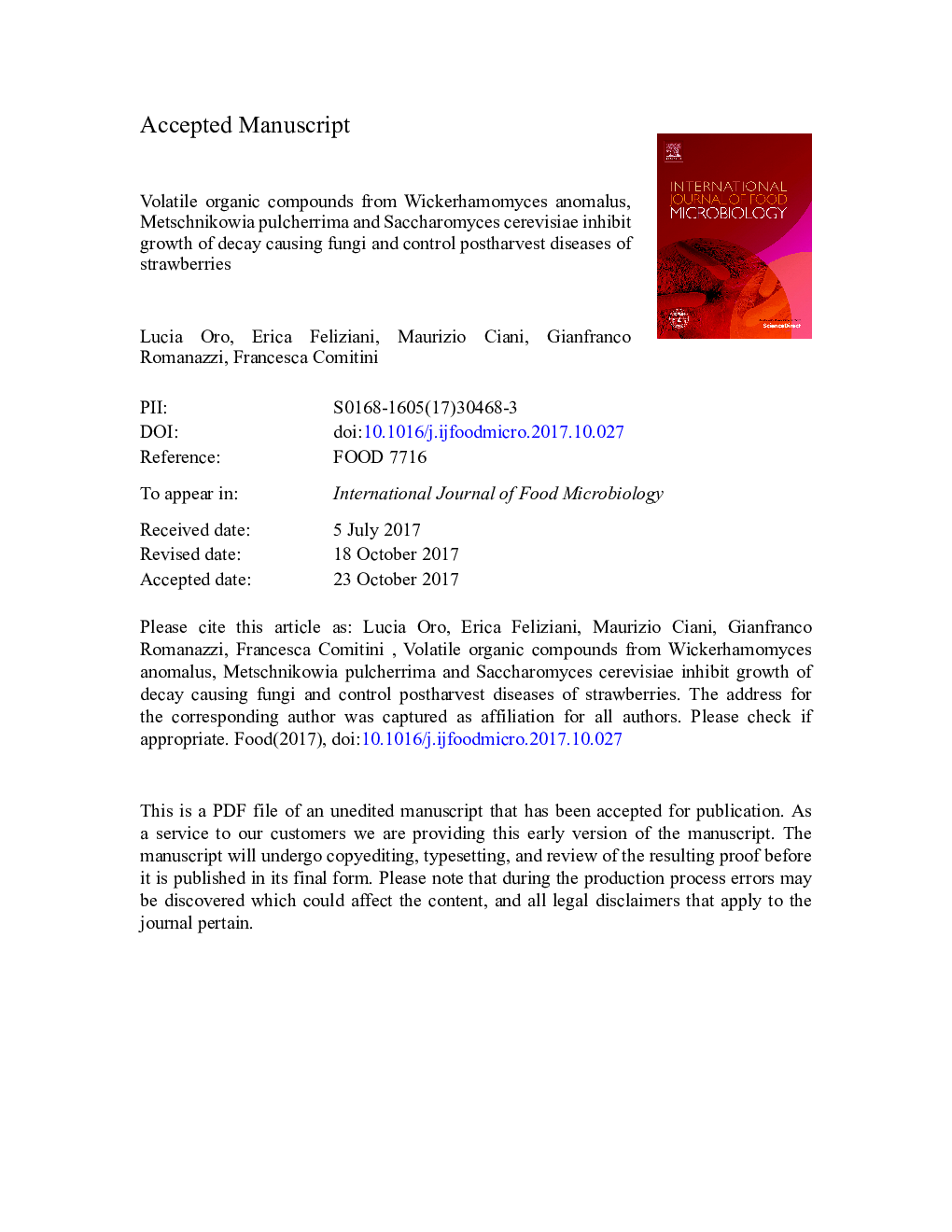| Article ID | Journal | Published Year | Pages | File Type |
|---|---|---|---|---|
| 8844359 | International Journal of Food Microbiology | 2018 | 22 Pages |
Abstract
The effectiveness of Wickerhamomyces anomalus, Metschnikowia pulcherrima and Saccharomyces cerevisiae as biocontrol agents on postharvest decay of strawberry (Fragaria x ananassa, cv. 'Alba') fruit, and their inhibitory activities on some decay-causing fungi were evaluated. Volatile organic compounds from these yeasts decreased mycelial growth of Botrytis cinerea by 69%, and by less for Monilinia fructicola, Alternaria alternata, Aspergillus carbonarius, Penicillium digitatum, Cladosporium spp., and Colletotrichum spp. Strawberry fruit exposed to 6-day-old liquid cultures of W. anomalus, M. pulcherrima and S. cerevisiae for 48Â h showed 89%, 40%, and 32% reductions, respectively, in gray mold McKinney Index. Vapours of ethyl acetate, the main volatile organic compound of these yeasts, completely inhibited B. cinerea growth at 8.97Â mg/cm3, and suppressed gray mold on strawberry fruit at 0.718Â mg/cm3. The biocontrol activities of these yeasts can be ascribed to ethyl acetate, which can be used for control of postharvest gray mold of strawberry fruit.
Related Topics
Life Sciences
Agricultural and Biological Sciences
Food Science
Authors
Lucia Oro, Erica Feliziani, Maurizio Ciani, Gianfranco Romanazzi, Francesca Comitini,
